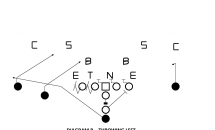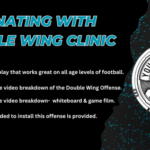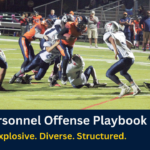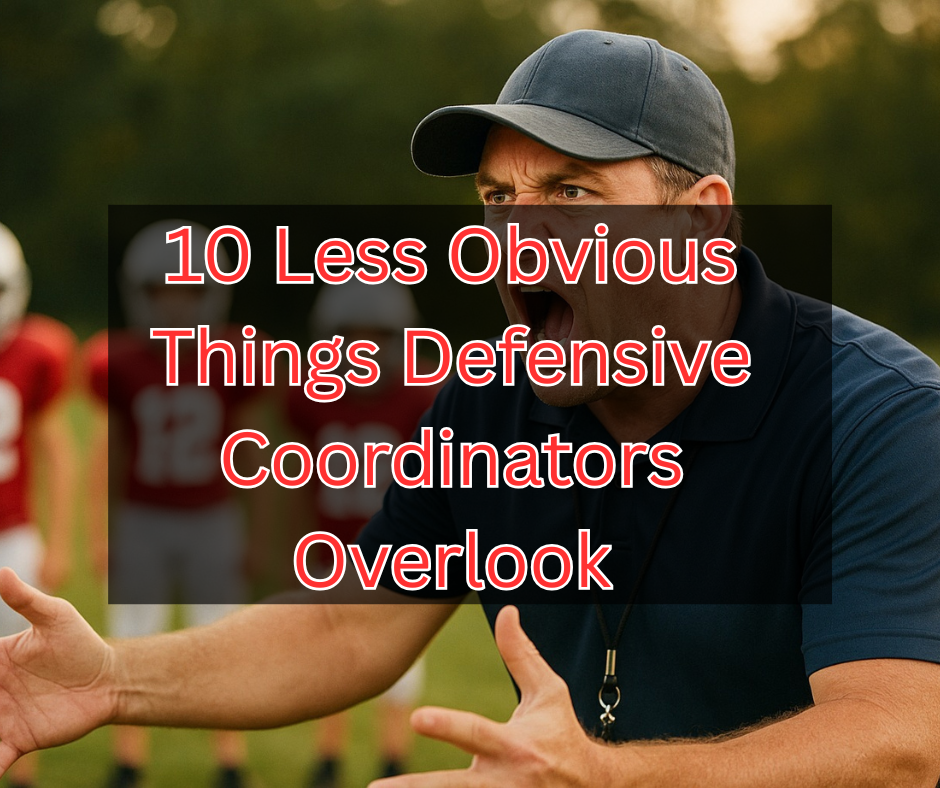Youth Football Pass Blocking Schemes- Coach Ross Maddalon
Youth Football Pass Blocking Schemes by Coach Ross
Coach Maddalon is an assistant coach at Nottingham High School in NJ.
Simple “Quick Game” Pass Protection – Scheme and Technique
I have always been a fan of getting the running backs involved in the passing game. Whether it be out of 3-back, 2-back, or 1-back set, the more outlets you have in the passing game – the better. At the same time, I have tried to simplify our quick game passing scheme to be easy to learn for our linemen. We run the ball more than we pass, so I know time allotted to practice pass protection technique is at a minimum. I have found this scheme and technique is both easy for our offensive linemen to understand as well as fundamentally sound.
The Scheme
When pass blocking we want to slide our offensive line to the side we are throwing the ball. I figure that the offensive tackle is the closest player to the playside emolos (end man on line of scrimmage), so I want him to get his hands down as fast as he can. We have our QB read coverages pre-snap to find out which side he will throw the ball to, so he can check the slide protection at the line if you desire to do so. If we are throwing to the right – the playside OL (RG, RT) will either “Jump-Cut” or “Jump-Punch” their playside gap threats. The backside OL (C, LG, LT) will slide protect to their playside gap threats. If we are throwing to the left, the playside and backside will switch responsibilities. The lone running back in the backfield will block the backside “C” gap.
Figure A -Throwing Right Figure B- Throwing Left
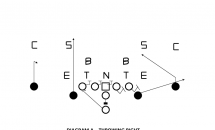
When pass blocking is important to teach your linemen to block a gap – not a man. This is important against blitzing and slanting fronts. The scheme is blitz-proof against C-Gap to C-Gap blitzes. If a defense sends 7 or 8 – someone is guaranteed to be open. Run your best quick game blitz beaters if you see that. I prefer double slants, slant-arrow, or bubble screens.
The Technique
Playside Pass Blocking Technique – We teach our playside OL to either “Jump-Cut” or “Jump-Punch” their playside gap threats. I teach the “Jump-Cut” technique if we are under center. Our “Jump-Punch” technique is taught if we are operating from the shotgun.
“Jump-Cut”
1st step
The OL will kick back with his outside foot on a 45 degree angle to show pass immediately. He will pop his shoulder pads up to influence the pass rush. This will get the DL to pass rush aggressively – Exactly what we want.
2nd step
The lineman will cut the DL using the “crab” technique. I want the OL to get his inside shoulder on the outside knee of the DL and “crab” walk into him. If the lineman does a good enough job with his first step, the DL should be pretty easy to cut. This will give the QB a clear lane to throw the ball without having any hands in his face to bat the ball down.
“Jump-Punch”
1st step
Same first step as above with the “Jump-Cut” technique
2nd step
The OL will literally jump with both feet into the defender to his playside gap. While he jumps, he will deliver a major punch with both of his hands to the lower abdomen of the DL. He will be bringing all of his force and power into his “Jump-Punch.” As long as he hits the DL low, the DL will be forced to bring his hands down to defend himself. This will clear the QBs vision for throwing the ball.
Backside Technique
Slide Pro
1st Step
The OL will slide with their playside foot to the their playside gap staying low the entire time. It is important that the OL keeps their shoulders square to the LOS.
2nd Step
The OL will slide his backside foot to the playside gap. The OL will now have taken over the vacated gap left by the playside OL or adjacent backside OL. Keeping his shoulders square, he will deliver a low punch to any DL or blitzing LB in their gap. It is important to emphasize to the OL that they must keep moving his feet after contact.
This has been the most effective quick game pass blocking protection that I have been using. If we have two backs in the backfield, we can now get one of them involved in the passing game.
Pass blocking protections do not have to be too complicated. Always remember – Easy to teach, simple to learn. It’s the best way to go for
-Coach Ross Maddalon
Follow Coach Ross on twitter: @ MadDawgFBall

